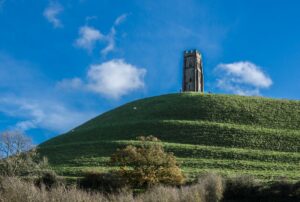The Medieval Ritual Landscape: Archaeology, Material Culture and Lived Religion project (MeRit) will reveal the deep history of ritual practices in medieval England (c.1000–1600 CE), performed by ordinary people as part of their everyday lives.
It will deliver methodological innovation, integrating archaeological, historical and digital humanities (DH) analyses to bring original perspectives to the burgeoning field of medieval lived religion. Complementary sources of artefactual evidence (excavated and chance finds) will be analysed at different scales (macro-scale national and transnational, and micro-scale regional) to illuminate how medieval people expressed their own religious agency, largely unrecorded by written sources. The need for the project was identified by the Portable Antiquities Scheme (PAS), who sought academic collaboration to unlock the research potential of thousands of medieval finds reported by citizen scientists. While many projects have utilised PAS data, medieval and religious questions have been neglected by previous research. It will place English public finds evidence in comparative context with recently established public finds schemes in Denmark and the Netherlands, offering a timely opportunity to pioneer transnational analysis of European public finds, with relevance to archaeological citizen science across Europe (Deckers et al 2016). For the first time, medieval lived religion will be evaluated in terms of regional differences and across periods of major change, including the Black Death and the Reformation, to yield a landmark study in European material culture analysis. This multi-scalar framework combines ‘big data’ methods with social questions derived from gendered and biographic approaches:
- How did the material practices of lived religion intersect with gender, family and community?
- What types of ritual objects were activated in different spatial and social contexts?
- How can archaeological finds be used to identify change over time, responses to social and
political upheavals, or major transitions in the material practices of lived religion? - How can public finds be used in combination with excavated evidence to locate ritual
practices in the landscape, mapping them in relation to natural features, the reuse of earlier
monuments, the topography of medieval settlements and religious sites, and routes of
transport and pilgrimage? - To what extent were the material practices of lived religion shaped by local and regional
identities? - Did north-west (NW) Europe share a common repertoire of medieval religious
objects and ritual practices?

